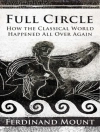East Sandling Camp. 1 June 1915
‘Captain Boyer and I are leaving for London to buy a motor car for the regiment. We will be staying at the Savoy.’
Flanders. 27 October 1915. Diary entry: 4:00 p.m.
‘Returned to the trenches. After two days of rain, they are in a deplorable state. There is mud up to our knees. The parapets have collapsed in several spots. The nights are frigid, our feet are cold, and we have not yet received our supplies of wood and charcoal.’
In the field. 1 August 1918.
‘You will pardon the brevity and the looseness of this letter when you know under what conditions it has been written. What you wish to know above all I can tell you at once. I am well — in fact I do not think I have ever been quite so well in body and in spirit. I have been protected in a special manner during the last three days. I have seen so many narrow escapes myself that I am beginning to think that one should not worry much about possible eventualities.’
No. 8 British Red Cross Hospital, Boulogne. 6 September 1918.
‘By this time you will have received reassuring cablegrams and field postcards and possibly letters from friends of mine.
‘First, to be quite frank, I will admit that I have not been in fit condition to write a coherent letter …’
Об авторе
Georges Vanier, who served as Governor General of Canada from 1959 to 1967, was 26 when he was one of the first men to join the newly established Royal 22nd Regiment – known as the ‘Van Doos.’ He was in his second year in the Montreal firm of Dessaules and Garneau, and very much the son of a Montreal upper-class family. Vanier, described by Maclean’s as ‘Canada’s moral compass, ‘ remains one of the most respected and deeply loved figures in Canadian public life.












